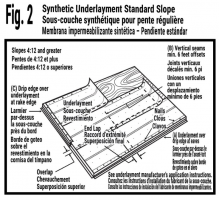jar546
CBO
As controversial as this may seem, I am not sure why drip edge would NOT be in shingle fashion and OVER the underlayment, even if a peel & stick, self-adhering membrane. Let's look at some codes. I'll start with Florida which says (specific to asphalt shingles):
Then there is the 2021 IRC which says:
This verbiage of underlayment goes OVER the drip edge and goes back to the 2012 IRC.
When you get to the 2009 IRC, there is no section for drip edge at all. The section for underlayment, however, states it must be installed in a shingle-like fashion which I would interpret to be OVER the drip edge where the drip edge is used.
As a contractor, I put the drip edge on first then started my underlayment, including ice and water shield that would go OVER the drip edge.
Owens Corning, for example, does show the underlayment OVER the drip edge.
So the question is; why does Florida want the drip edge over the underlayment for an asphalt shingle roof?

R905.2.8.5 Drip edge.
Provide drip edge at eaves and gables of shingle roofs. Overlap to be a minimum of 3 inches (76 mm). Eave drip edges shall extend 1/2 inch (13 mm) below sheathing and extend back on the roof a minimum of 2 inches (51 mm). Drip edge shall be installed over the underlayment. Self-adhering ASTM D1970 underlayment may be installed over a primed drip edge flange. There shall be a minimum 4 inch (51 mm) width of roof cement installed over the drip edge flange or the self-adhering underlayment. Drip edge shall be mechanically fastened a maximum of 12 inches (305 mm) on center. Where the Vasd as determined in accordance with Section R301.2.1.3 is 110 mph (177 km/h) or greater or the mean roof height exceeds 33 feet (10 058 mm), drip edges shall be mechanically fastened a maximum of 4 inches (102 mm) on center.Then there is the 2021 IRC which says:
R905.2.8.5 Drip edge.
A drip edge shall be provided at eaves and rake edges of shingle roofs. Adjacent segments of drip edge shall be overlapped not less than 2 inches (51 mm). Drip edges shall extend not less than 1/4 inch (6.4 mm) below the roof sheathing and extend up back onto the roof deck not less than 2 inches (51 mm). Drip edges shall be mechanically fastened to the roof deck at not more than 12 inches (305 mm) o.c. with fasteners as specified in Section R905.2.5. Underlayment shall be installed over the drip edge along eaves and under the drip edge along rake edges.This verbiage of underlayment goes OVER the drip edge and goes back to the 2012 IRC.
When you get to the 2009 IRC, there is no section for drip edge at all. The section for underlayment, however, states it must be installed in a shingle-like fashion which I would interpret to be OVER the drip edge where the drip edge is used.
As a contractor, I put the drip edge on first then started my underlayment, including ice and water shield that would go OVER the drip edge.
Owens Corning, for example, does show the underlayment OVER the drip edge.
So the question is; why does Florida want the drip edge over the underlayment for an asphalt shingle roof?

